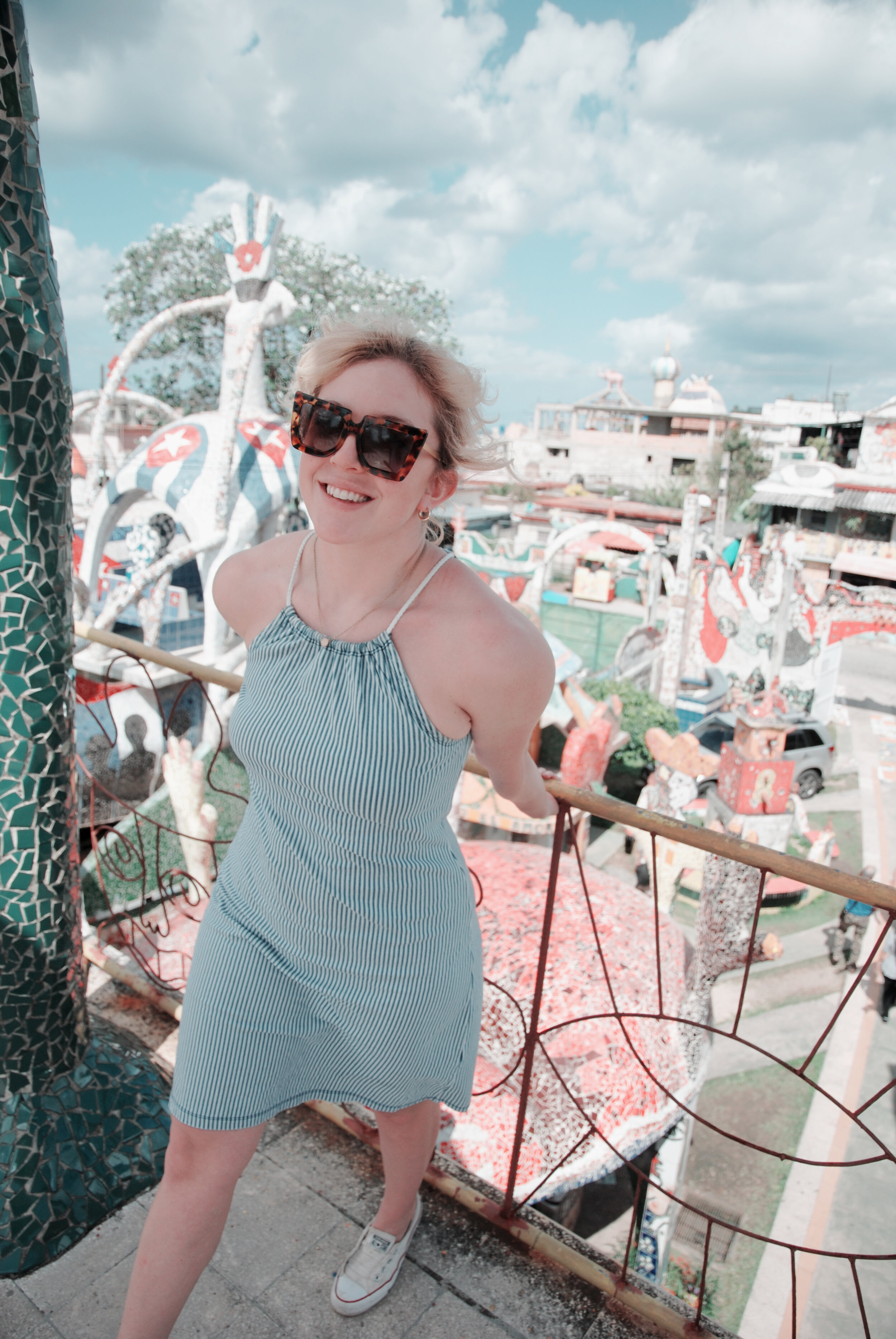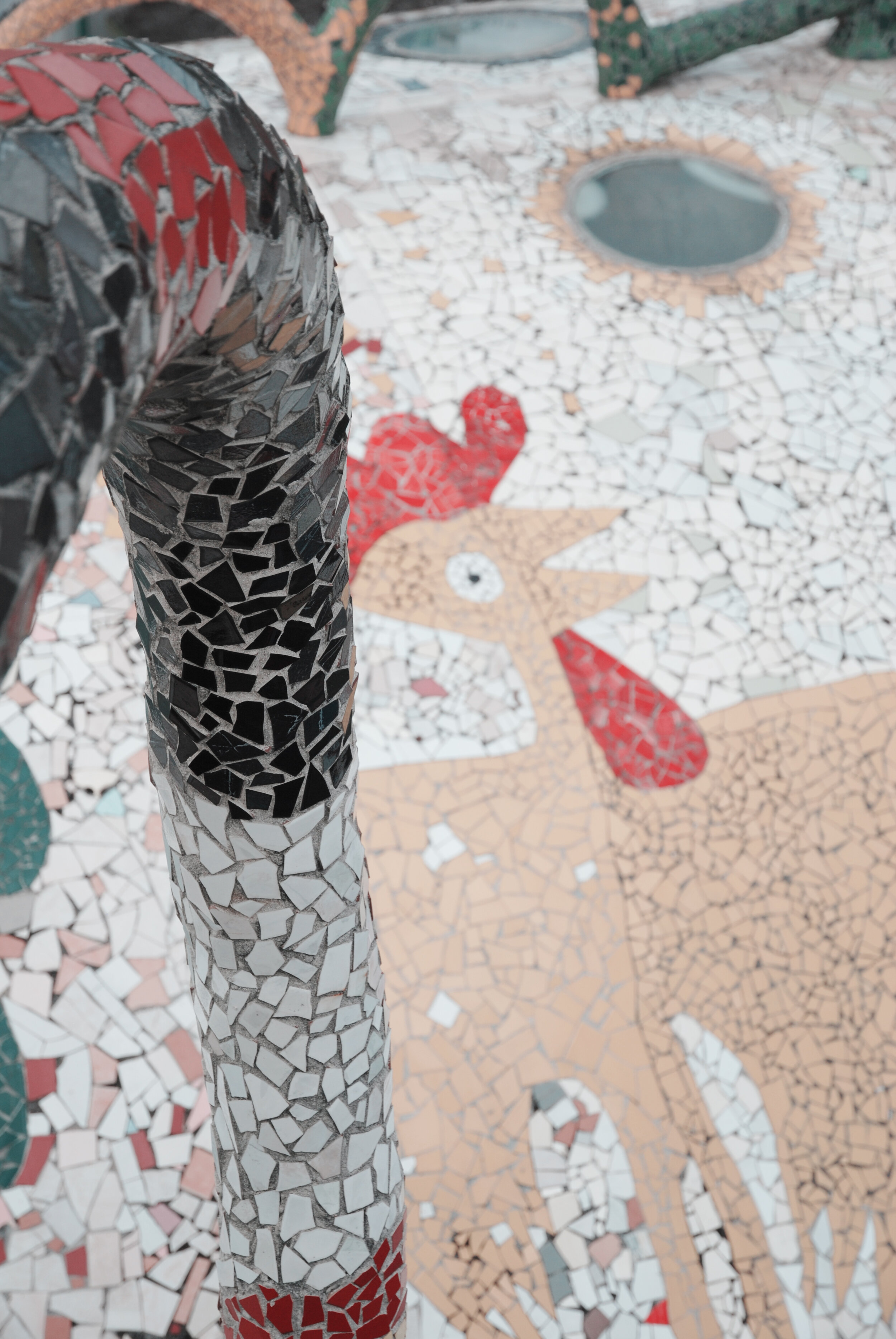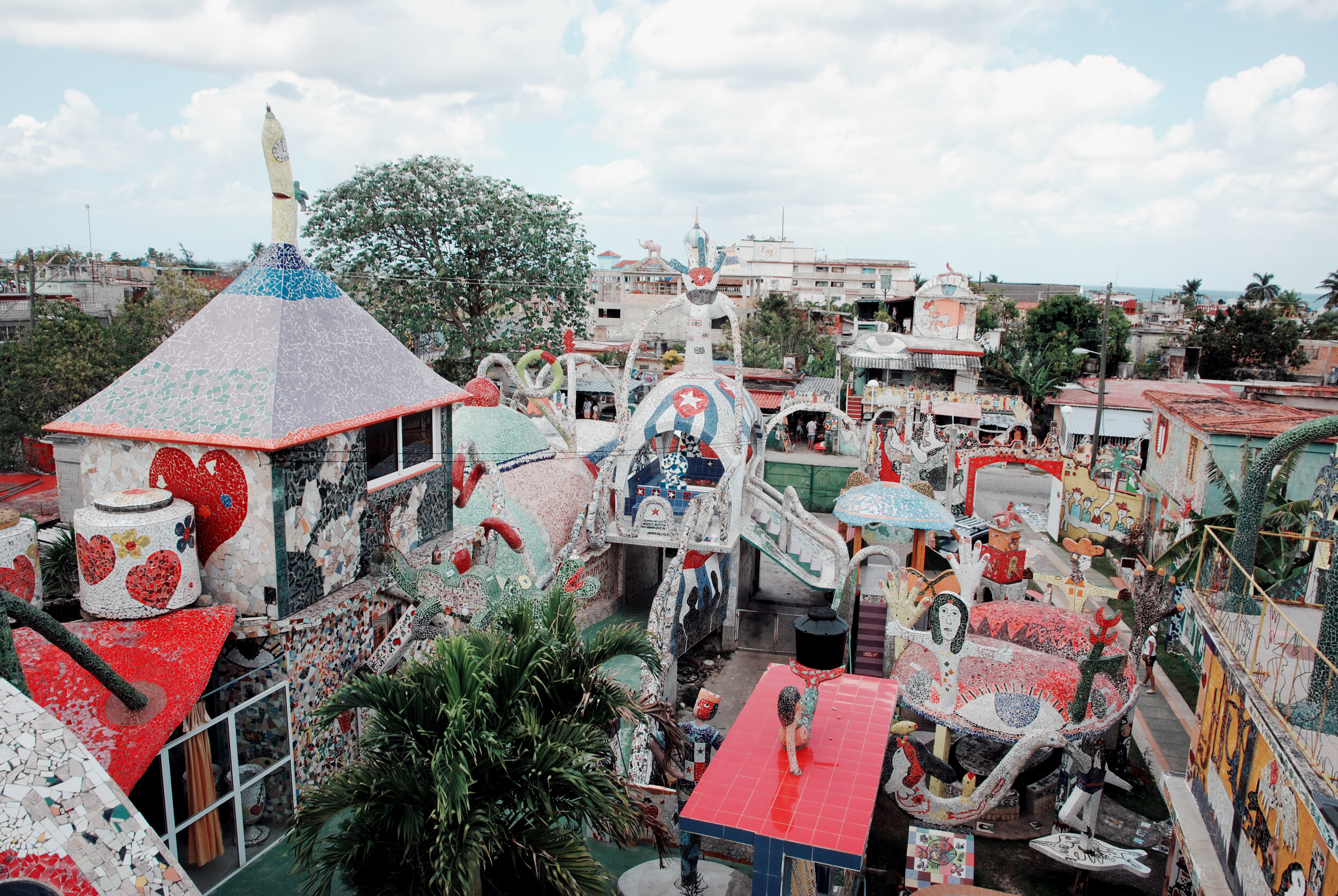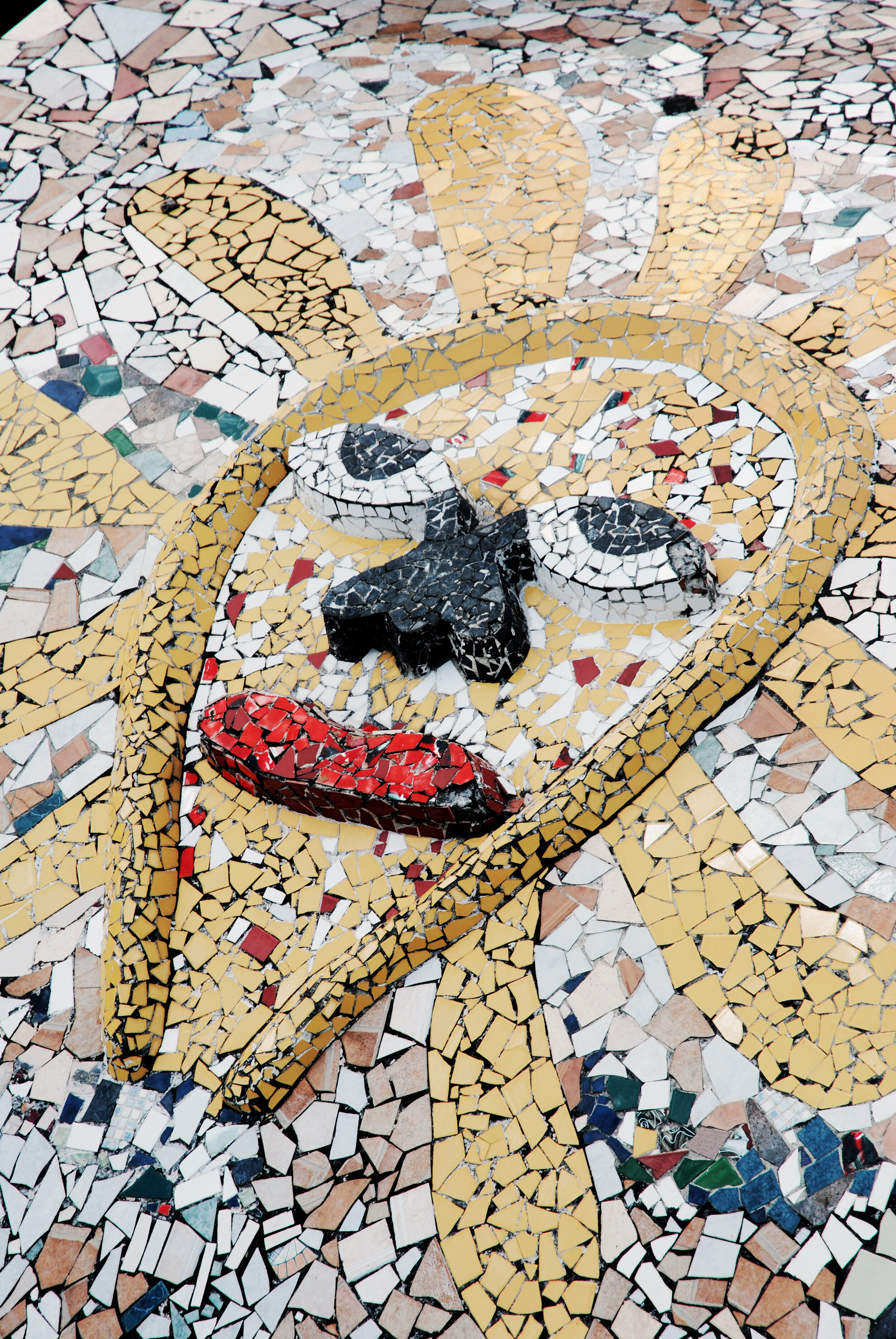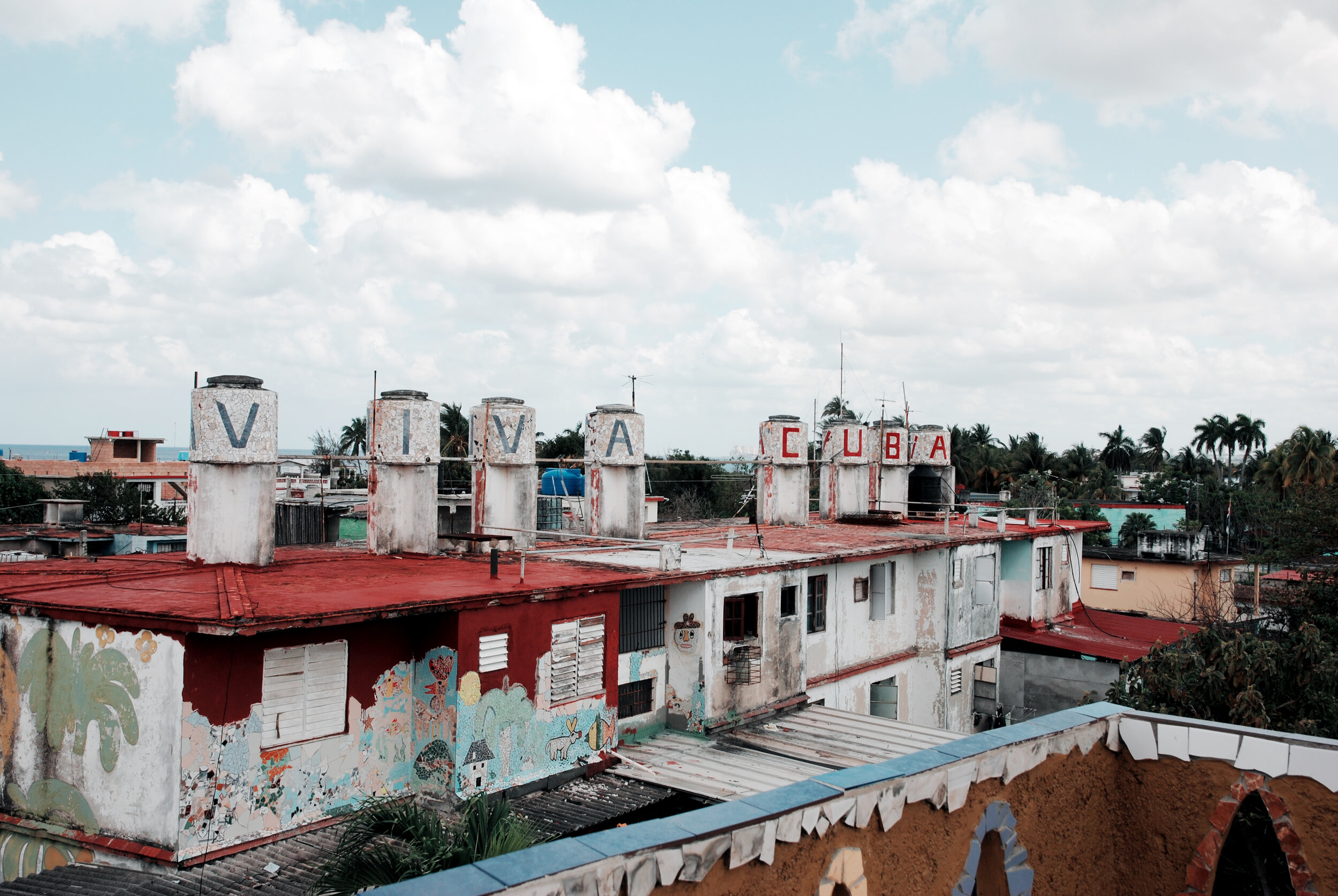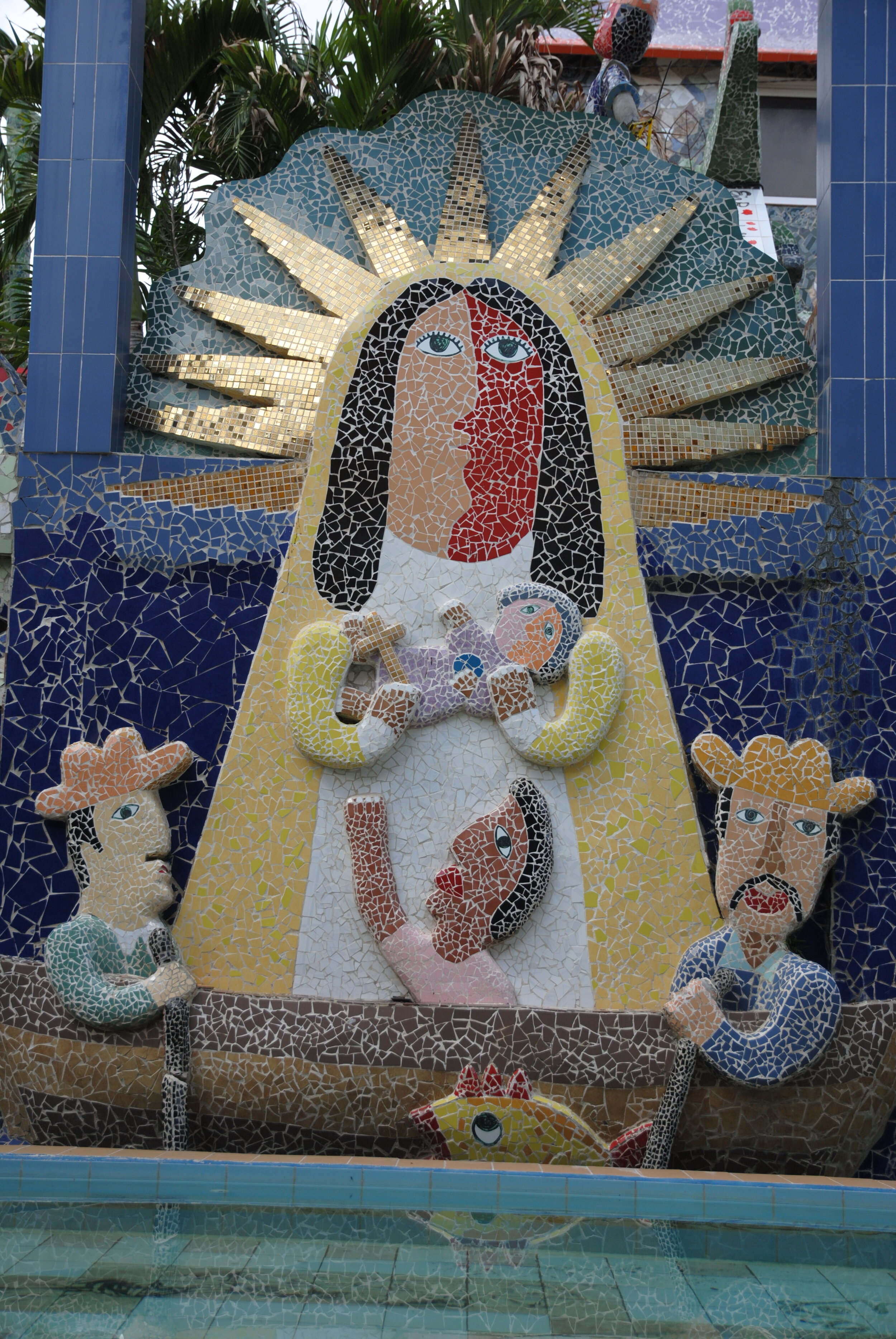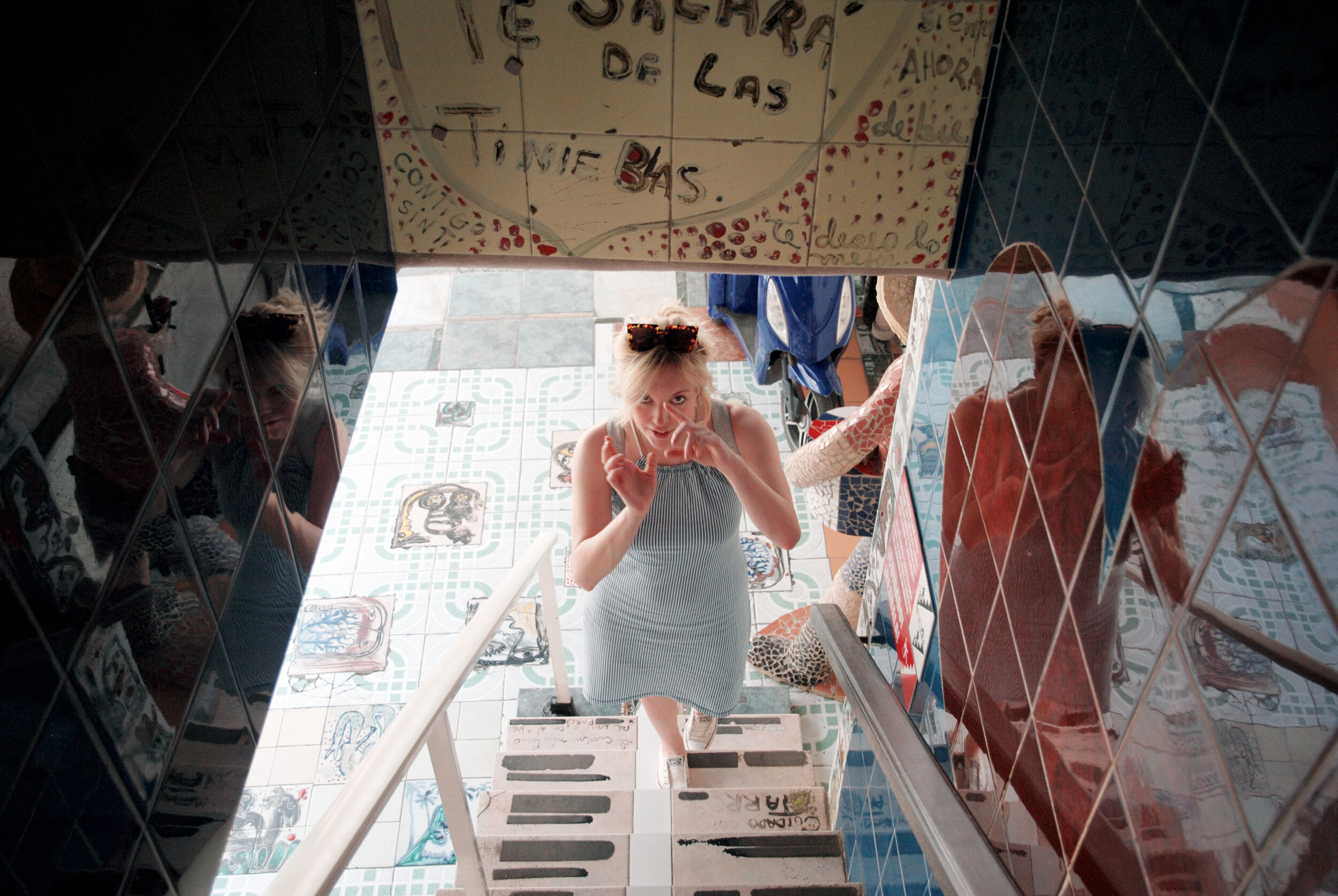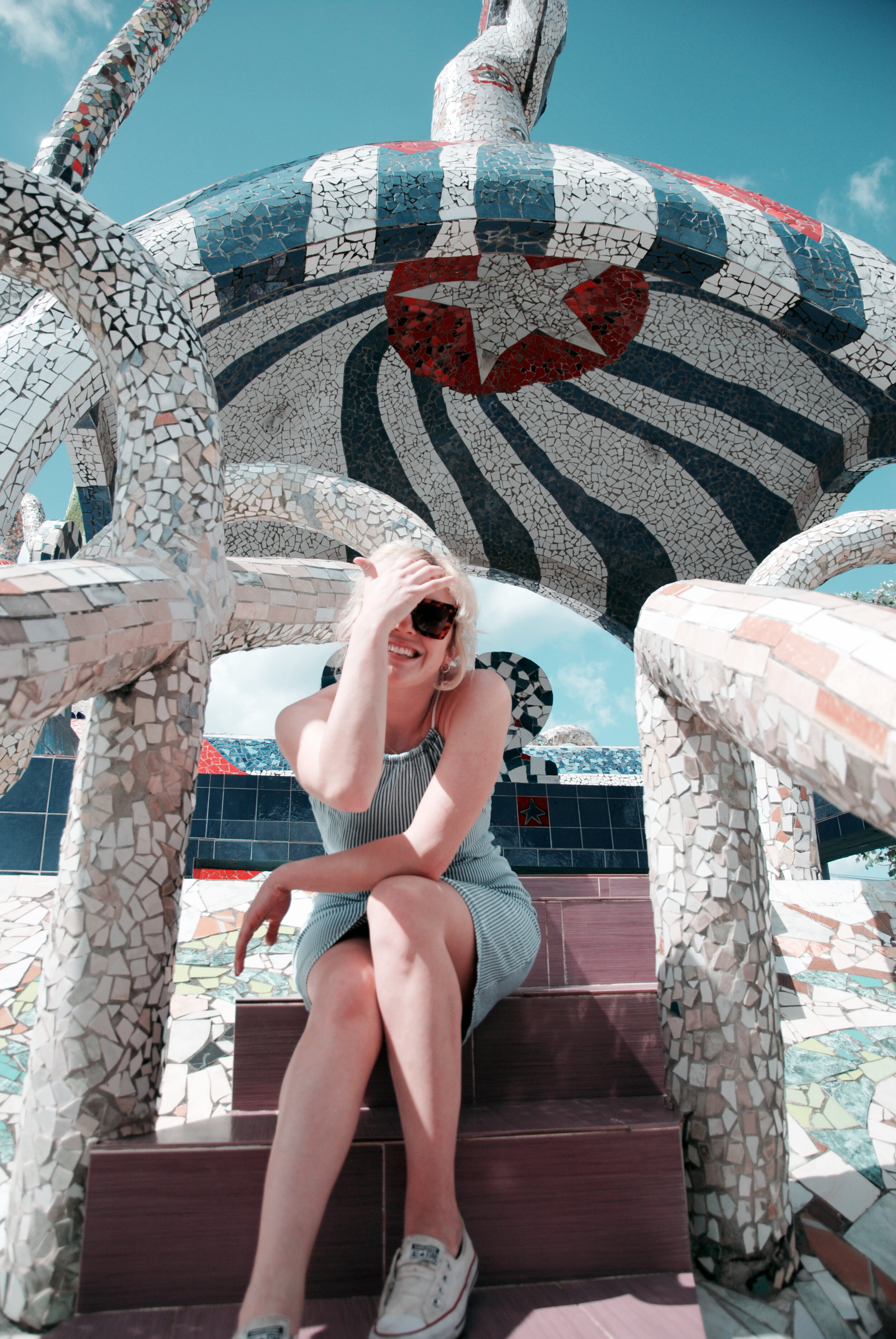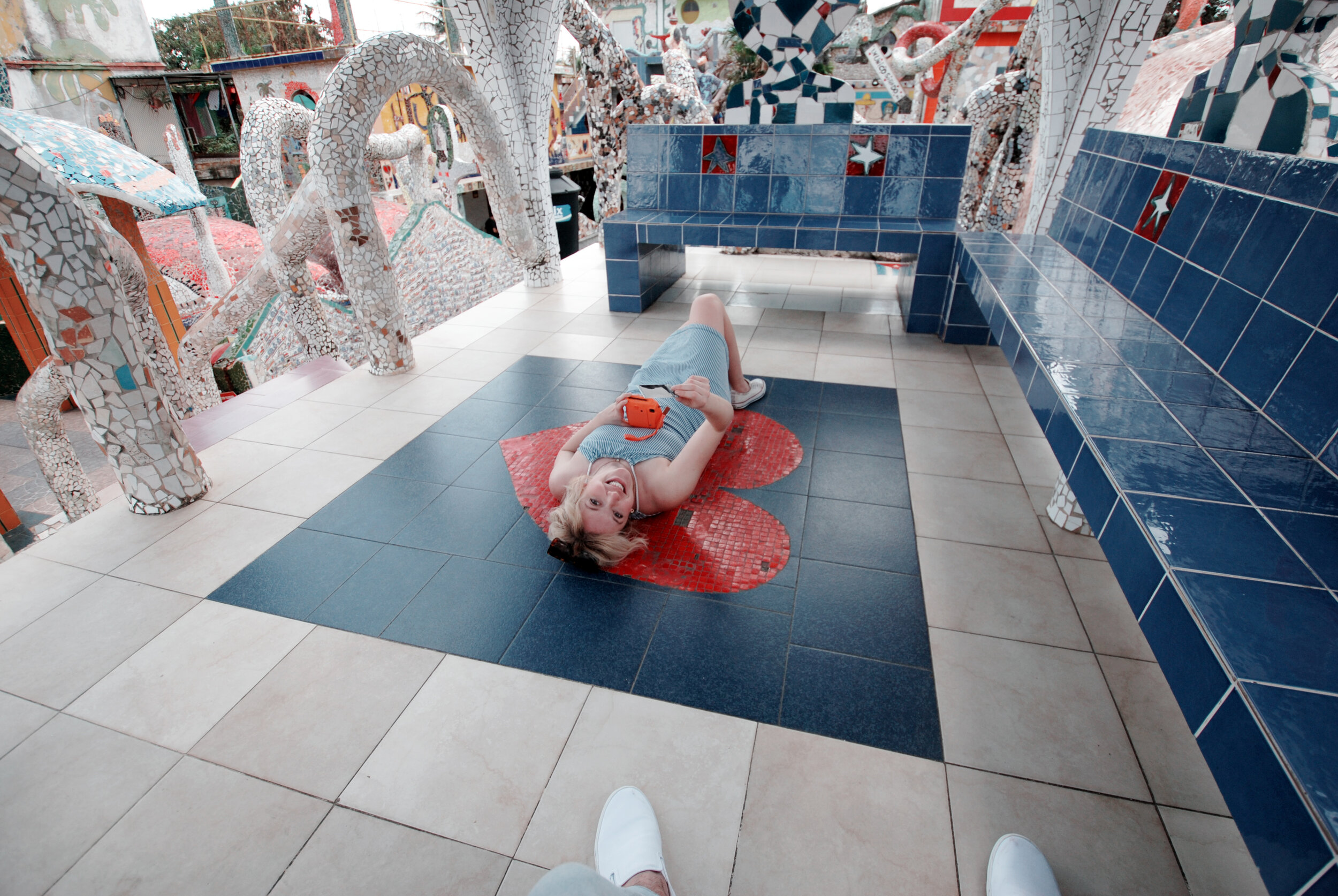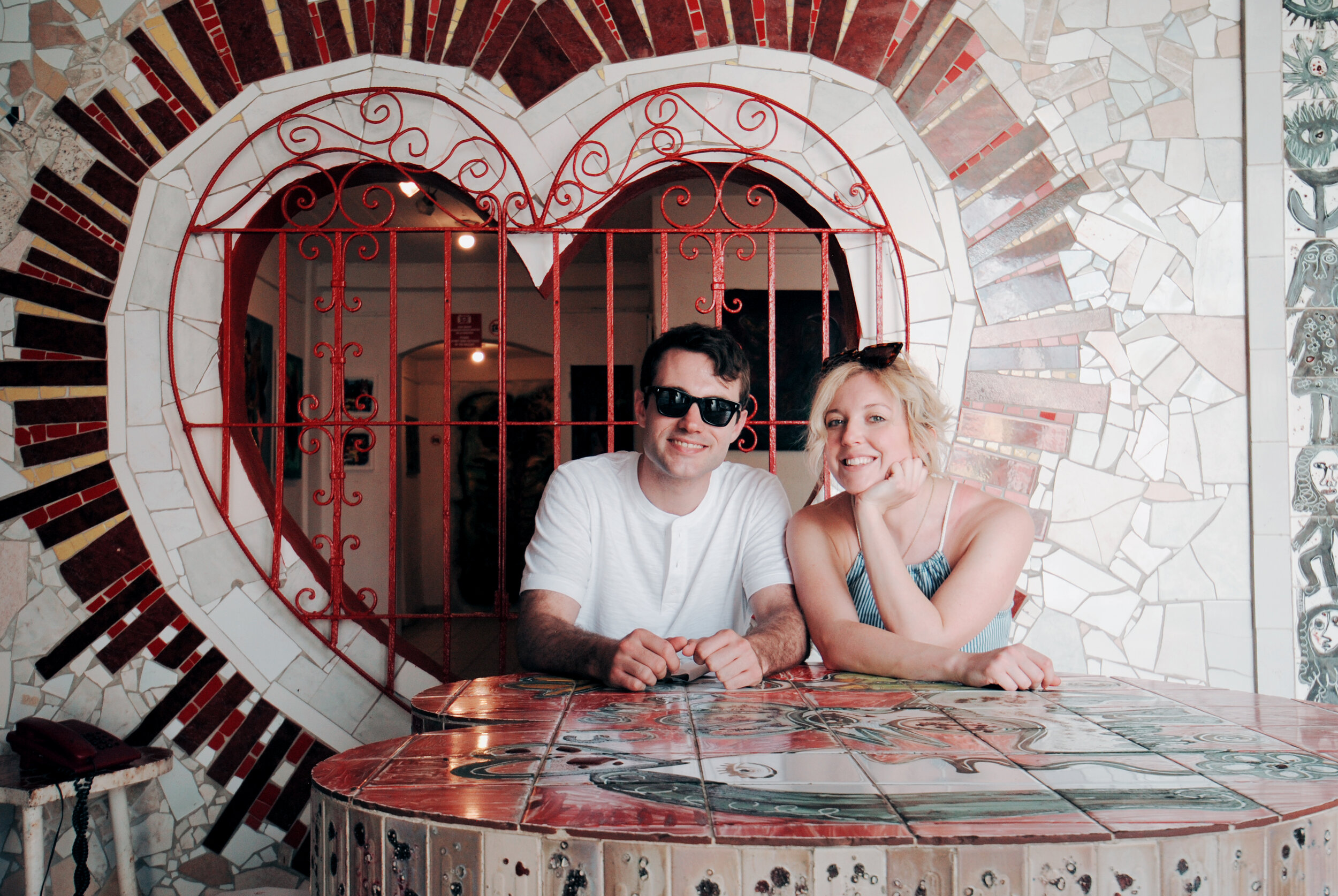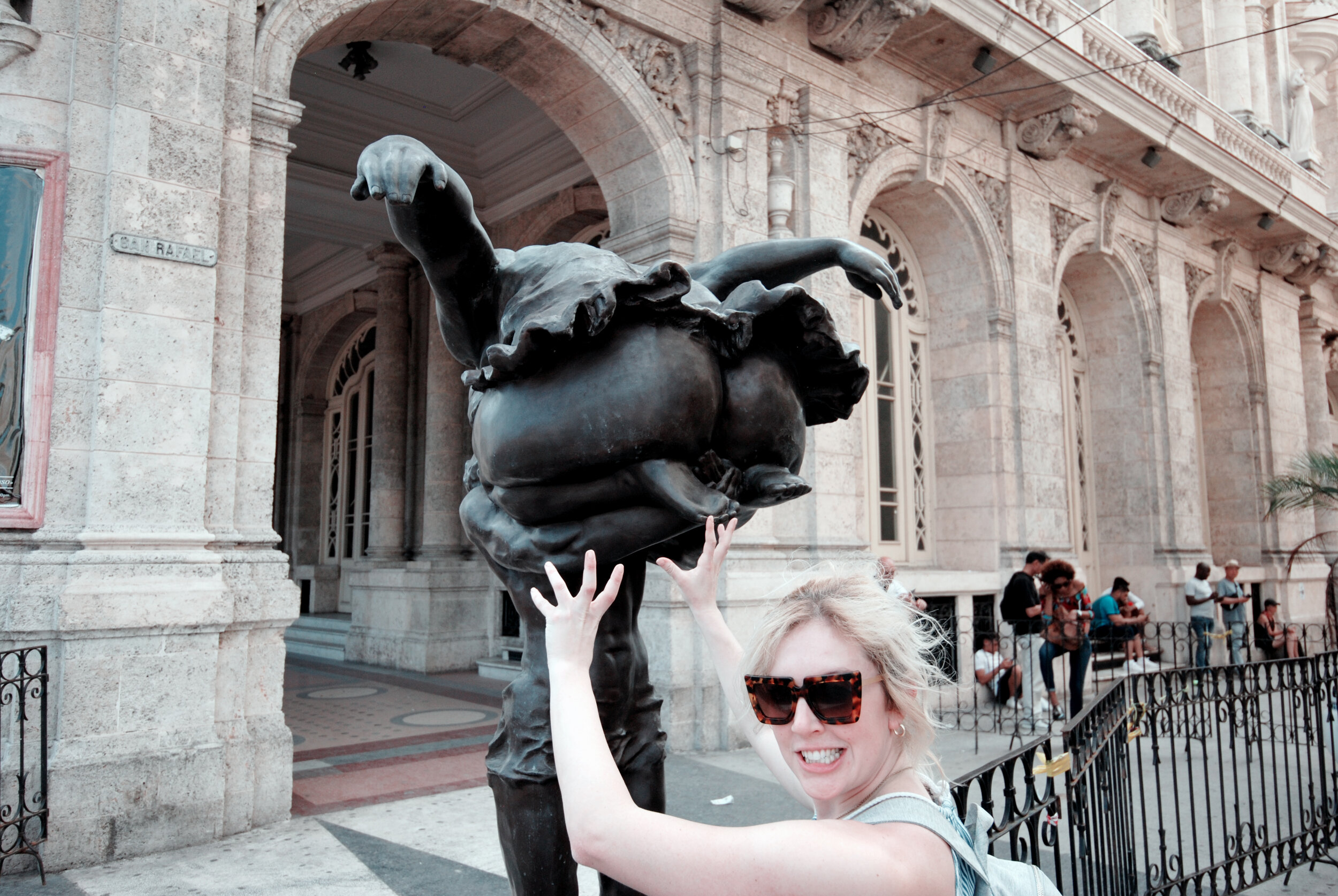Cuba: Part Two Fusterlandia / Taxis
My mind is still reeling from how dysfunctionally functional Cuba was, but before I get into that hot mess of a topic, I’ll start with the fun stuff: the activities. One of our first activities was visiting Fusterlandia, an artisan neighborhood about 20 minutes outside of Havana.
Fusterlandia
Fusterlandia is an “artisan neighborhood” started by one artist, José Fuster, mosaicing his home in brightly colored tiles. The look caught on quickly with the neighbors. Now, the entire area is covered in his style of art, from people’s homes to business fronts. The entire community comes together for these projects, not hired workers, and some homes to mosaic can take several months to complete. The work ranges from portraits to subtle protest art. Because it’s illegal for the Cuban people to formally protest, we found people were using art as their medium of choice throughout Cuba. The chicken art is one of the common outcries, a popular mosaic design in Fusterlandia.
The government rations all food; how much people are allowed to buy, prices, and which establishments get which quantities of what. There’s a surplus of chicken and pork and not a lot of beef (also not a huge source of vegetable and fish options - even though Cuba has excellent weather conditions for crops and is an island for fish…. saving my frustration). We discovered you get more jail time if you kill a cow than if you kill a person - so beef, people want it, but people don’t get it. As a form of peaceful (legal) protest, chicken artwork is everywhere. It’s the peoples’ way of saying “enough is enough” but also representing this part of their culture and history.
Fusterlandia was worth the visit. The whole town was selling their own artwork, which I loved. We saw people selling pottery, screenprints, and their own mosaic masterpieces. This community was creative, inspiring, and overall had an “upbeat” feel to it.
Some tips for your taxi there (and Taxis in general):
First, BARGAIN with your taxi. As an American, you’re a target…. for everything. They know you have money, and you’re down there on the visa to support the people. You can still be supportive, but also not be taken advantage of. It’s a flat fee of 25 CUC to get to the airport (which is around 35 min away from Havana), so we figured around 15 CUC there and 15 CUC back would be sufficient to Fusterlandia. We first learned that all the “gypsy cabs,” the old-fashioned cars, non-yellow cabs, are A) privately owned (pretty much all of them have been passed down by their grandparents), so they set their own prices (also a great way to support the Cuban people) and B) they do everything as roundtrips. No driver drops off a passenger, then gets hailed by another. I honestly hated that.
We got our driver, who had his car passed down to him from his grandfather, take us for 40 CUC roundtrip. We had several drivers try to “offer” us with 60 CUC, but surprisingly, I’m a hardass and I don’t buy BS, and our driver I think recognized that and pulled us aside from everyone and agreed to our offer. (I think I also surprised Connor with my bargaining skills) We walked around Fusterlandia for about an hour, while our driver waited (along with all the other drivers there that were waiting for their passengers). I HATED this process. I hated knowing he was standing outside in the heat, waiting for us to have a leisurely experience. However, I learned all the drivers have this type of comradery; most of them grew up together, they all get to know one another from waiting around together, and even on the road they’ll all honk and wave at one another. And yet, my guilt grew, and that’s when we did the best thing…
We were starving, and instead of having our driver bring us back right away for lunch, we asked if we could all grab lunch together, on us, in the area. I have never seen someone’s face light up the way this man’s did. We couldn’t tell if it was a language barrier or not, but he refused to sit with us initially outside at this beautiful restaurant and sat inside at the bar with AC. He only ordered a small appetizer and a coke and was extremely thankful. We finished up before him and then joined him at the bar. I think it took him a bit to order because he really did not believe we were paying for whatever he wanted. I just couldn’t help but think that he must be starving driving people around all day and waiting in the hot weather. When we joined him at the bar, he even offered some of his food to us. I’m not sure if it was our luck to find someone that appreciative, but you could see in his face that being treated like an equal, and not as some servant, changed his entire mood.
When we got back to the area we were picked up at, (with all the other gypsy cabs waiting that wouldn’t bargain with us) we made sure to also tip. It felt great helping this man but also knowing he was going to tell his peers about his day with the couple that everyone was trying to scam / scoff at / the cheap-rejected-Americans (or whatever was said - or maybe I’m just paranoid) were actually really nice. I just hope he at least gave one ‘F*ck You’ to somebody.
Some things to consider about the Cars/Taxi’s in Cuba:
90% of the 1950’s American cars are Taxi’s. They’re super expensive to maintain, they’ve been passed down in families, and using them as a Taxi service helps with that cost. Tourists also prefer driving around in them: they’re part of the reason people go to Cuba, you’re supporting the people, not the Government, and they’re more aesthetically pleasing.
If you want to take photos next to one of these cars, prepare to tip. Most don’t mind if you take a photo of the car itself, but if you want a photo of you next to the car/ in it, you’ll be asked for money.
A lot of the drivers also know how to personally fix their cars, and act as their own mechanics. A lot of these cars have been updated with AC units, USB inserts for music, and pretty much all of them now have Hyundai engines now, which helps with fuel.
Fuel is super expensive, no one can afford it, and some gas stations don’t even have fuel. Where they get gas… I have no clue.
New cars do exist in Cuba. A lot of cars are from the 80s and 90s, and of course, government employees were driving more recent models. A lot of Russian Ladas and Saabs.
Everyone knows the roads like the back of their hands. Their’s no GPS, and limited access to internet to look up directions.
Many of the taxi drivers (pretty much everyone) have a second job, or driving wasn’t their original chosen profession. With the gypsy cabs, you can probably earn over 100 CUC a day, whereas a doctor can legally make max 90 CUC A MONTH. The country is built for tourism, not it’s own people… more on that later. So be kind to your driver, because I bet you, using their grandfather’s relic for your service, is the last thing they want to do.
My outfit:
Dress: J.Mclaughlin
Shoes: Converse
Sunglasses: Tezza - the Patty Havana (how meta)



